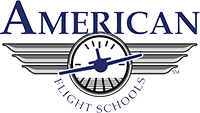Specialty Flight Training
Click on the options below to read more specific information about each type of specialty flight training available at Aspen Flying Club.
Mountain Flying
One of the greatest thrills of being a pilot in Colorado is the opportunity to fly throughout the majestic Rocky Mountains. With snowcapped peaks, high deserts and grasslands, and many interesting public-use airports, mountain flying can be the highlight in a lifetime of flying. Mountain flying isn’t without risk. Narrow and sloping runways, one-way airports, density altitudes in excess of 10,000 feet and unpredictable and abrupt changes in weather will test any pilot’s decision-making abilities and skills. Statistics show that pilots without the training and skills needed for safe flight over mountainous terrain often get themselves into situations which are beyond their capabilities. The risks of mountain flying are minimized when a pilot fully understands the conditions commonly encountered in mountainous regions, specific challenges of destination airports, and the performance characteristics of their aircraft.
Tailwheel Training
Earning a tailwheel endorsement can be one of the most fun and rewarding activities to broaden your experience and improve your flying skills. The fun part is flying a fabric covered, tailwheel aircraft with a stick, just like the aviation pioneers. The rewarding part is mastering a conventional gear aircraft, using the rudder more precisely for coordinated flight, and increasing your awareness of the wind and how it affects the aircraft in the two most critical phases of flight. Tailwheel pilots develop a better understanding and improved skills for coping with crosswinds during takeoff and landing in any aircraft. There is a real art to flying a taildragger and because they are so unforgiving, learning to fly them will force you to become a better pilot.
Spin Training
A lot of pilots are very nervous about stalls and spins. These are just aerodynamic states that an aircraft can encounter, not ones that are typical of routine flying. Being exposed to these scenarios will give you the visual and aircraft cues of what’s happening. Being confident of entering and exiting a spin, gives pilots great confidence that they will be able to deal with any situation. Spin training is a confidence builder.
Upset Recovery Training
Upset Recovery Training is designed to develop a pilot’s sensitivity to cockpit distraction, and give them the skills on how to effectively recognize departure from controlled flight, as well as, upset scenarios and methods to properly and safely recover from these conditions.
Introduction to Aerobatics
Aerobatics are a fun and challenging way to explore the true capabilities of both pilot and aircraft. Learning to fly an aircraft in the three dimensions it’s capable of gives a whole new appreciation of aviation, flying, and aerodynamics. Aerobatics are a great way to expand a pilot’s abilities, and the experience gives greater confidence when operating any aircraft. Aerobatics with a qualified and experienced instructor is just as safe as flying any other aircraft. Aspen’s course is designed as a basic introduction to aerobatics.
G1000 Training
In recent years general aviation has benefited from many innovations and technological advancements. In particular, the Garmin G1000 system has revolutionized the cockpits of aircraft it is installed in. However, with all the new capabilities comes complexity. New cockpit technology increases safety and increases flying capabilities, ONLY if the pilot knows how to use the new systems and technologies.
Cirrus Transition Training
Aspen Flying Club’s Cirrus transition course is designed to prepare pilots to be current and proficient regarding VFR flight training in Cirrus aircraft. The course covers the unique operating procedures of the Cirrus aircraft for all flight situations.
